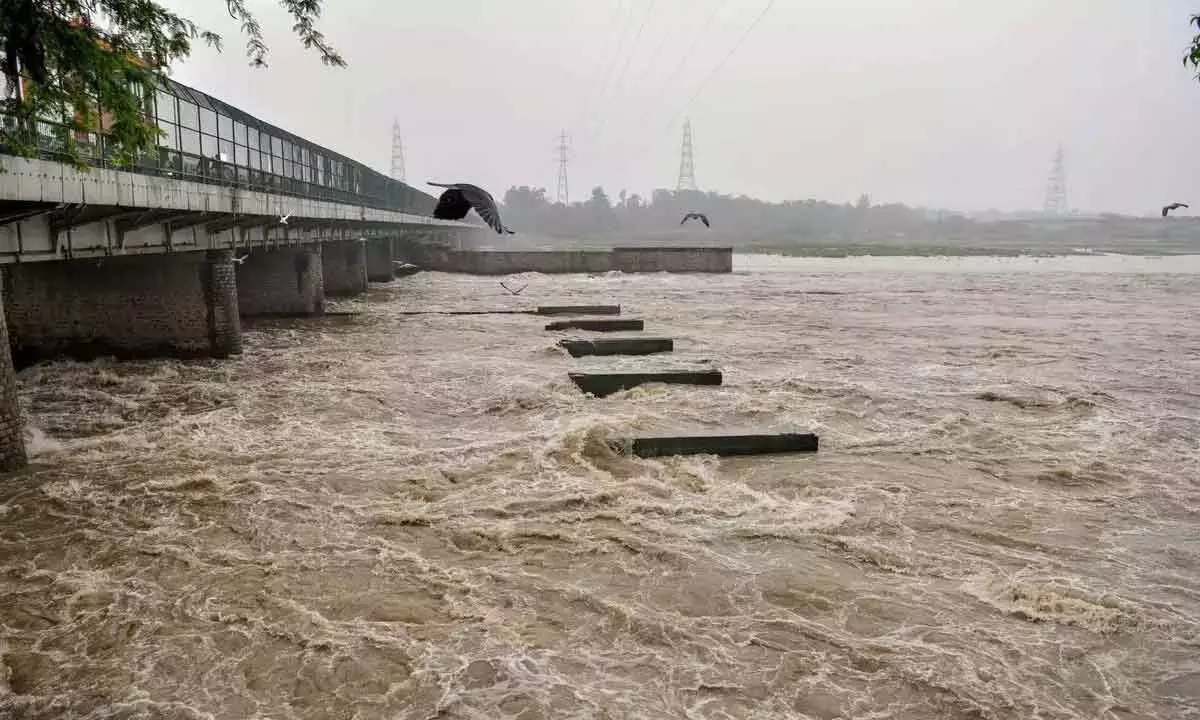Yamuna River Water Level Recedes And Stabilizes After Crossing Danger Mark

- The Yamuna river's water level, which exceeded the critical threshold of 205.33 meters, has now receded and stabilized, according to officials from the irrigation and flood control (I&FC) department.
- The water level measured 205.56 meters early Wednesday, dropped to 205.12 meters by 9 am, and further declined to 204.76 meters by 11 pm.
Following its rise above the critical threshold of 205.33 meters the previous night, the Yamuna river's water level receded and stabilized by Wednesday evening, as stated by officials from the irrigation and flood control (I&FC) department.
Indicating the fluctuations, officials reported that while the Yamuna's water level measured 205.56 meters at 1 am on Wednesday, it subsided below the danger mark to 205.12 meters at 9 am the same day. By 11 pm on Wednesday, the water level further declined to 204.76 meters but still remained above the warning level.
A representative of the I&FC department affirmed that though vigilance is maintained, current patterns suggest that an immediate alarming situation is unlikely. The discharge of water from the Hathnikund barrage has remained below 50,000 cubic feet per second (cusecs) within the past 24 hours, progressively diminishing.
Presently, the hourly water release rate from the barrage hovers around 20,000 cusecs with an expected further decrease. Records reveal that the last instance of the Yamuna in Delhi surpassing the "danger level" occurred on July 29.
In Delhi, the water level at the Old Yamuna bridge serves as a crucial measure for evaluating flood conditions. The warning level is identified at 204.5 meters, while the danger level, initiating preparations for evacuating riverside inhabitants, is denoted at 205.33 meters. A water level of 206 meters signifies the evacuation threshold, prompting the government to relocate residents to relief shelters.
Data from the Central Water Commission (CWC) unveils that the river initially surpassed the 205.33-meter danger level at 10 pm on Tuesday, escalating to 205.56 meters by 1 am on Wednesday. Subsequently, the water level has gradually decreased.
The Hathnikund barrage, situated 228 km north of Delhi in Haryana's Yamunanagar district, typically necessitates 48 to 72 hours for its water releases to reach Delhi. A flood alert is declared when discharge from the barrage exceeds 100,000 cusecs. This barrage manages the flow of water toward Delhi from the Yamuna, Tons, and Giri rivers.
Anticipating the rise in Yamuna's water level after over 70,000 cusecs of water were released on Monday, the I&FC official expressed that stability is likely to prevail unless further heavy rainfall occurs upstream.
On July 13, the Yamuna achieved an all-time high water level record, reaching 208.66 meters at the Old Yamuna bridge, leading to extensive flooding and waterlogging across Delhi. The previous record stood at 207.49 meters on September 6, 1978, with Hathnikund's water flow exceeding 200,000 cusecs at that time.
Meanwhile, the Delhi government assured that the current water release wouldn't pose an issue. The authorities are closely monitoring the situation and expect the Haryana government to communicate if substantial water releases into the Yamuna are planned. They also anticipate water distribution into the canal flowing towards Uttar Pradesh.














